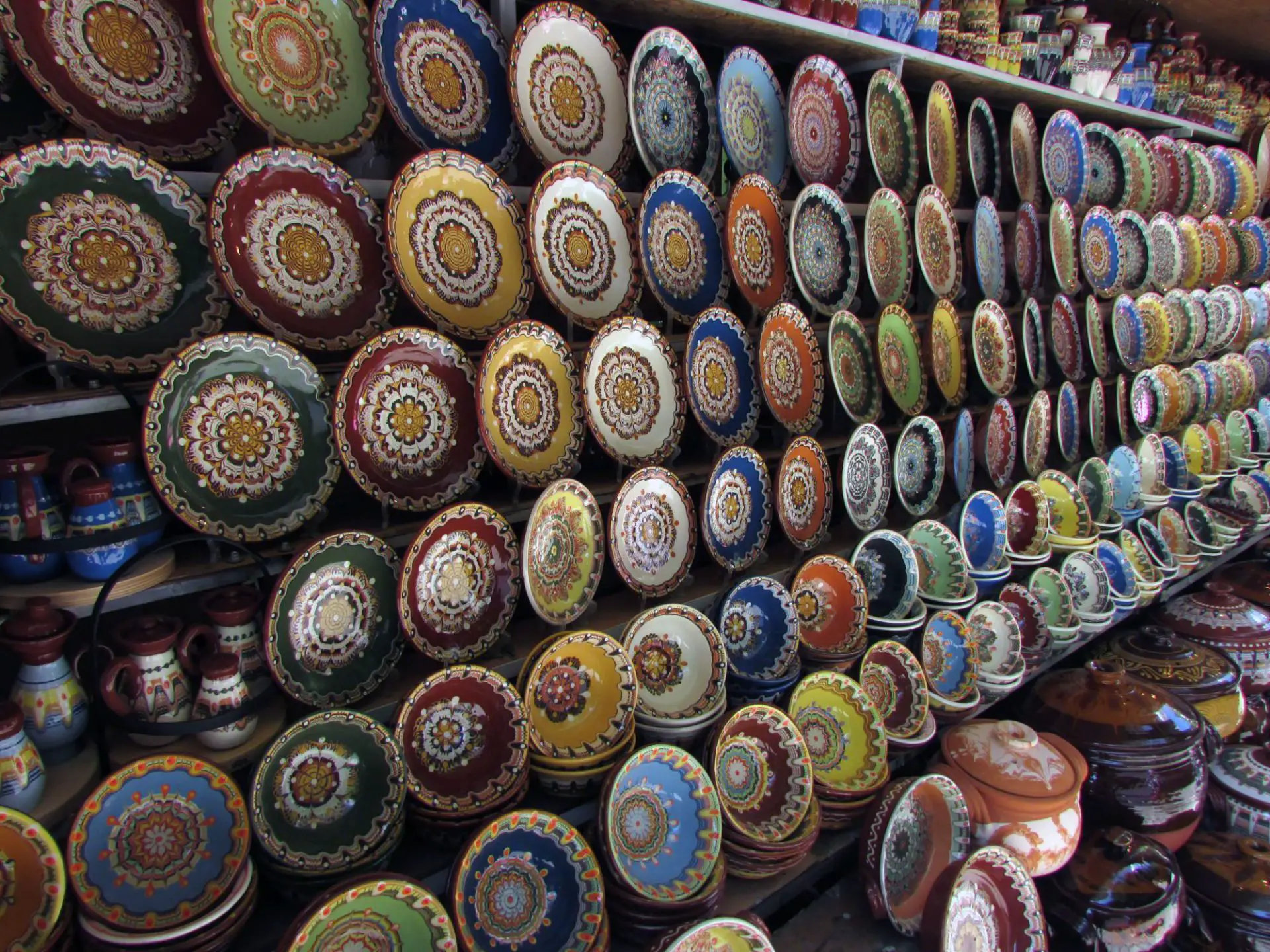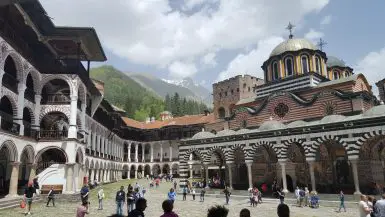Bulgaria is a country full of surprises. I wasn’t expecting to find much of an art scene there, but I was pleasantly surprised, particularly by Bulgarian pottery.
I was enchanted by the tradition Troyan pottery. Dazzling patterns in soothing colors dance across solid oven-ready ceramics. And it was extremely cheap to start your own collection once you left Sofia.
I’m starting to turn into my grandma, who everyone in the family teases for having a collection of plates from the places she’d visited. At least mine are locally crafted pieces of folk art, right?
Troyan history
Like most ancient cultures, pottery is one of the oldest craft traditions in Bulgaria. Unsurprisingly, everyone needed vessels to cook and carry liquid in. Bulgarians trace their lineage to the god of wine and revelry, Dionysus, so naturally pottery is extremely important culturally!


The main center of ceramic production is the city of Troyan, and Troyan ceramics are considered the “true” Bulgarian pottery. Troyan is a small town in North Bulgaria located on the banks of the Beli Ossam River in the foothills of the Balkan Mountains.
According to legend, the mandala designs are linked to the peacocks of the court of the Ottoman empire. A Bulgarian might debate you on this point, I found them to be extremely sensitive about their centuries-long occupation by the Turkish Ottoman Empire.
Troyan Ceramic Process
The pottery style practiced today began in the 19th century based on Slavic and Thracian patterns. The terra cotta clay from the region has a distinct red color that turns Bulgarian pottery into a deep reddish brown once fired.
The style is said to be different based on the different women (or men) who make it by hand, with each having distinct pattern designs and colors they prefer.
Types
The main Troyan dish you will encounter is a medium-sized lidded pot, usually used for making stews and steaming vegetable soups and slow cooking them for hours to mingle the flavors.
There are also pie dishes, platters, vases, jars, pitchers, and teapots in any size you can imagine. I picked up a beautiful mustard jar and pie dish while outside the Bachkovo monastery. I’m not sure what to do with the mustard jar – make my own mustard and put it in the fridge? I just thought it was extremely cute and easy to fit into my luggage.
Best places to find it
You can expect to pay less for Bulgarian pottery the further away you get from the capital Sofia. It’s about $35 USD per large piece in the capital, $20 outside of the Rila Monastery, and you can find deals in the country for around $10–15 USD. It’s a wonderful way to support local artists and bring back gifts that are gorgeously unique.
Most vendors will gift wrap purchases in newsprint paper for you for easy transport. I only got pieces that were small enough to take in my luggage, so I’m not sure what the shipping situation would be.
The craft can be found in the towns of Troyan, Gabrovo, Berkovitza, Razlog, Aitos, Chiprovtzi, the village of Boussintzi, and districts of Sofia.
Remember to put the ceramics in the oven as it preheats. Stick a cold piece in the hot oven and you have a recipe for a giant crack.
I would also recommend gently washing them by hand. They are heavy and sturdy but it’s not like you can take a trip to Bed Bath and Beyond to get a replacement. I couldn’t even find any on Amazon, which is supposed to have everything, right?
Sources
http://bulgarusa.com/id16.html
http://bulgarianpotteryandgifts.com/troyan-pottery
http://ellisshuman.blogspot.com/2013/07/the-beauty-of-bulgarian-ceramics.html
https://citysightseeing.bg/bulgarian-pottery-making/
Pin this:

Post contains affiliate links.




I enjoyed reading your article. Thank you for using or site as a source.